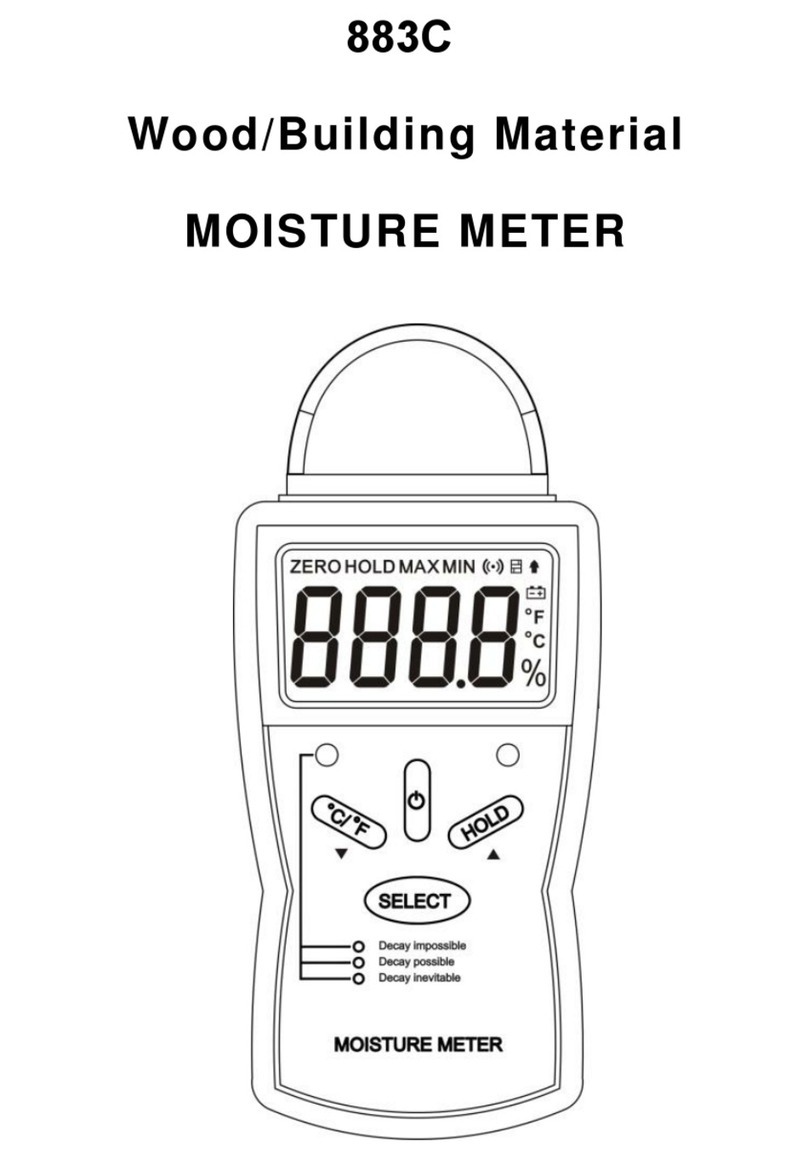
2.INTRODUCTION & SPECIFICATION
FUNCTION TERMINAL INPUT LIMIT
DC/AC Volts,1Ohm/Continuity/Diode,
CAP., Hz, % Duty, ms Dwell, RPM VΩHz
CAT III 1000V
DC, 750V AC
rms
AC/DC Current, Type-K TEMP. mA T+ 600mA DC/AC
AC/DC 20A 20A *20A DC/AC
* 20 Amp measurement for 30 seconds maximum.
Ohms can not be measured if voltage is present, ohms can be measured
only in a non-powered circuit. However, the meter is protected to 250 volts.
INTRODUCTION: Includes new generation, 12-function, auto-ranging
automotive diagnostic multimeter. Digital display gives accurate indication of
component outputs. Large, easy to read high contrast display with bright,
white backlight. Workshop-tough, durable bi-composite case with integral
stand and auto power shut-off. High speed processing circuitry reads
standard automotive parameters including duty cycle and pulse width making
this tool ideal for testing fuel injection systems. Features auto-ranging, and
data hold functions with overload protection on all ranges. Includes relative
functions including Min/Max and Peak Hold. Supplied with Inductive Coupler,
test probes and thermocouple in carry case.
SPECIFICATION...............................................Model No: 770J, 770K
Diode Check...........................Yes
Tach (RPM)...2-10cyl, 4-Stroke 60-9000 (x1)rpm, 600-12000 (x10)rpm
Auto Back-Light.....................Yes
Dwell:......................................................................................4/5/6/8cyl
Display Hold:..........................Yes
AC Voltage:...............................................600mV, 6V, 60V, 600V, 750V
Auto Ranging:........................Yes
DC Voltage:............................................600mV, 6V, 60V, 600V, 1000V
Inductive Coupler:..................Yes
AC Current:.............................................60mA, 600mA, 6A, 20A, 600A
Digits Height:......................24mm
DC Current:.............................................60mA, 600mA, 6A, 20A, 600A
Auto Power Off.......................Yes
Capacitance:..........10nF, 100nF, 1000nF , 10μF, 100μF, 10mF, 60mF
NCV detection.......................Yes
Frequency:................................................................0.001Hz-9.99MHz
Low Battery Indicator:.............Yes
Duty Cycle:.............................................................................1.0-99.0%
Batteries (supplied):.......9V (PP9)
Pulse Width:............................................................................0.1-10ms
Hi-Impact Case:......................Yes
Resistance:..........................600Ω, 6kΩ, 60kΩ, 600kΩ, 6MΩ, 60MΩ
Size (LxWxD):.......195x88x40mm
Continuity:....................................<50Ω Continuity Buzzer 2kHz
Weight(Include9V Battery):..350g
Temperature:.....................................-20 to +1000°C, -4 to +1832°F





























